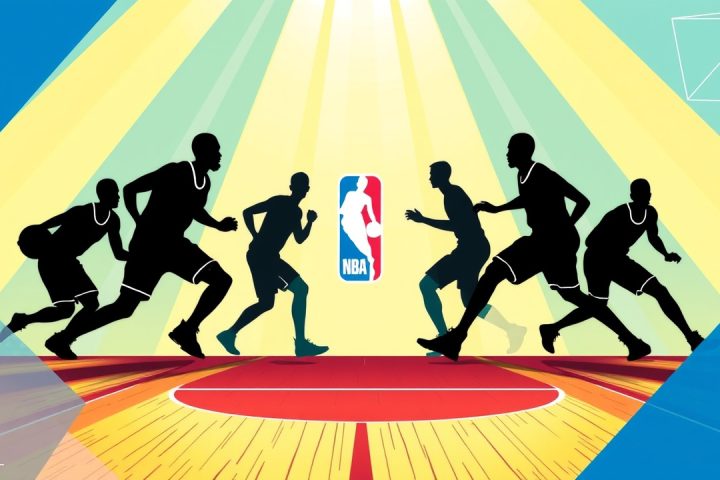Historic Moment in Basketball
On June 25, 2025, Earth II’s basketball universe witnessed a pivotal moment in its history. Dressed sharply in a navy Saville Row suit, NBA Commissioner Adam Silver approached the podium to announce the first selection of the tiered draft process: Cooper Flagg, an 18-year-old talent from Duke University, was the chosen one. Flagg, anticipated to be a transformative two-way forward, made his way to the podium amid a swirl of emotions — nervousness and excitement clear on his face. Beside him were three caps from different franchises: the Boston Celtics, the Brooklyn Nets, and the Golden State Warriors.
“The wait is over,” said Silver, welcoming Cooper to express his thoughts.
Flagg reflected on his journey, thanking various coaches, organizations, and notably his family for their support through this significant decision-making process. With the anticipation mounting, he lifted the blue and gold cap from the table, declaring, “…to be a Warrior.” The announcement sent waves of jubilation across the crowd assembled outside San Francisco’s Chase Center, as confetti rained down inside the arena and celebrations erupted among the Warriors’ coaching staff and ownership.
Evaluating the NBA Draft
But this striking scene serves as a lens through which to evaluate the NBA draft, which has remained a fundamental yet contentious aspect of professional basketball. The draft system permits teams to secure emerging talents at reasonable salaries, binding first-round picks to their franchises for up to five years. This model benefits front offices, creating a frenzy around annual draft events that generate massive audience engagement for networks like ESPN.
Critically, the draft also plays into a larger framework of competitive balance that many argue stifles individual player agency. In almost any other industry, assigning workers to specific companies without their consent would likely violate antitrust laws, yet professional sports operate within a unique context defined by collective agreements. The existence of drafts has been collectively bargained between leagues and player unions, with players often prioritizing immediate entry into the sport over the negotiation of preferred destinations.
Rethinking Player Autonomy
Here’s a thought-provoking scenario: What if recent high school sensations like Flagg could choose their own professional teams, similar to the National Signing Day experienced in college sports? The NWSL has already eliminated its draft in favor of free agency, marking a potentially innovative step other leagues might consider.
If NBA players had the autonomy to select their franchises, Flagg could opt for a multitude of reasons: proximity to family while playing for the Celtics, potential lucrative endorsements with the Nets, or a championship contender role with the Warriors. This leniency could incentivize competitive parity across the league, pushing teams to enhance their facilities and personnel to attract top talent.
Future of the Draft
Also significant is the concept of tiered player selection, akin to a modified draft that mitigates the risk of powerhouse teams monopolizing emerging stars. By creating classifications for incoming players, the NBA could ensure a more equitable distribution of talent, compelling teams to demonstrate their value to prospective players.
Ultimately, abolishing the draft could mitigate the prevalence of tanking, where franchises deliberately perform poorly to improve their chances of securing premier picks. As evidenced in recent seasons, a culture of losing has lingered despite attempts to discourage such behavior through modified lottery systems. Without the draft’s constraints, teams might prioritize winning over draft positioning, leading to a richer competitive landscape.
Though historical precedent has cemented the draft within the NBA’s fabric, the conversation surrounding its legality continues. Past challenges to its legitimacy suggest that the legal frameworks governing professional sports may evolve, compelling leagues to reconsider their operational models.
Conclusion
As the NBA navigates its future trajectory, the introduction of measures promoting player choice could enhance the sport’s progression while enriching the narratives surrounding each emerging star. It’s a shift that could redefine player destinies and reshape the league for years to come.




